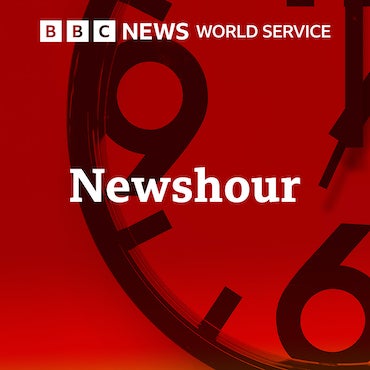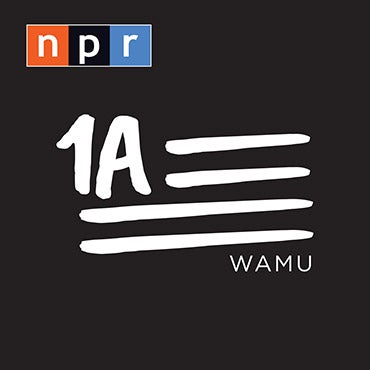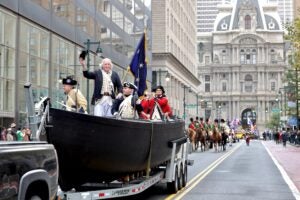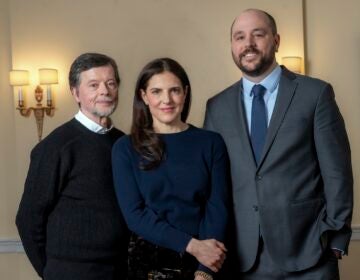Weitzman museum plans an America250 exhibition from an island in the Caribbean
“The First Salute,” opening in April, will tell the story of a tiny, largely Jewish island that played a key role in the Revolutionary War.
Listen 1:12
In artist Phillips Melville's mid-20th-century painting, the brig Andrew Doria receives the United States' first international recognition of independence when it arrived in port at Sint Eustatius island in November 1776. (Courtesy of the U.S. Navy Art Collection)
From Philly and the Pa. suburbs to South Jersey and Delaware, what would you like WHYY News to cover? Let us know!
To many, the American Revolution brings to mind images of bloodshed at the Battle of Brandywine, winter hardships at Valley Forge or Washington’s daring crossing of the Delaware River during a brutal nor’easter.
But next year, the Weitzman National Museum of American Jewish History will present the Revolution in the tropical climate of a tiny Caribbean island.
“In the popular imagination, the American Revolution took place predominantly in the Eastern seaboard. We think about Boston, we think about New York, we think about Philadelphia,” said curator Joshua Perelman.
“But strategically, the Caribbean was the key to both British and American victory,” he said. “To get to North America at that time, one had to go through the Caribbean.”
Perelman was speaking from Sint Eustatius, or Statia, a Dutch-controlled volcanic island barely 11 square miles, or roughly half the size of Manhattan. He is there on a discovery mission to identify artifacts for the forthcoming exhibition “The First Salute,” opening April 23 for a year.
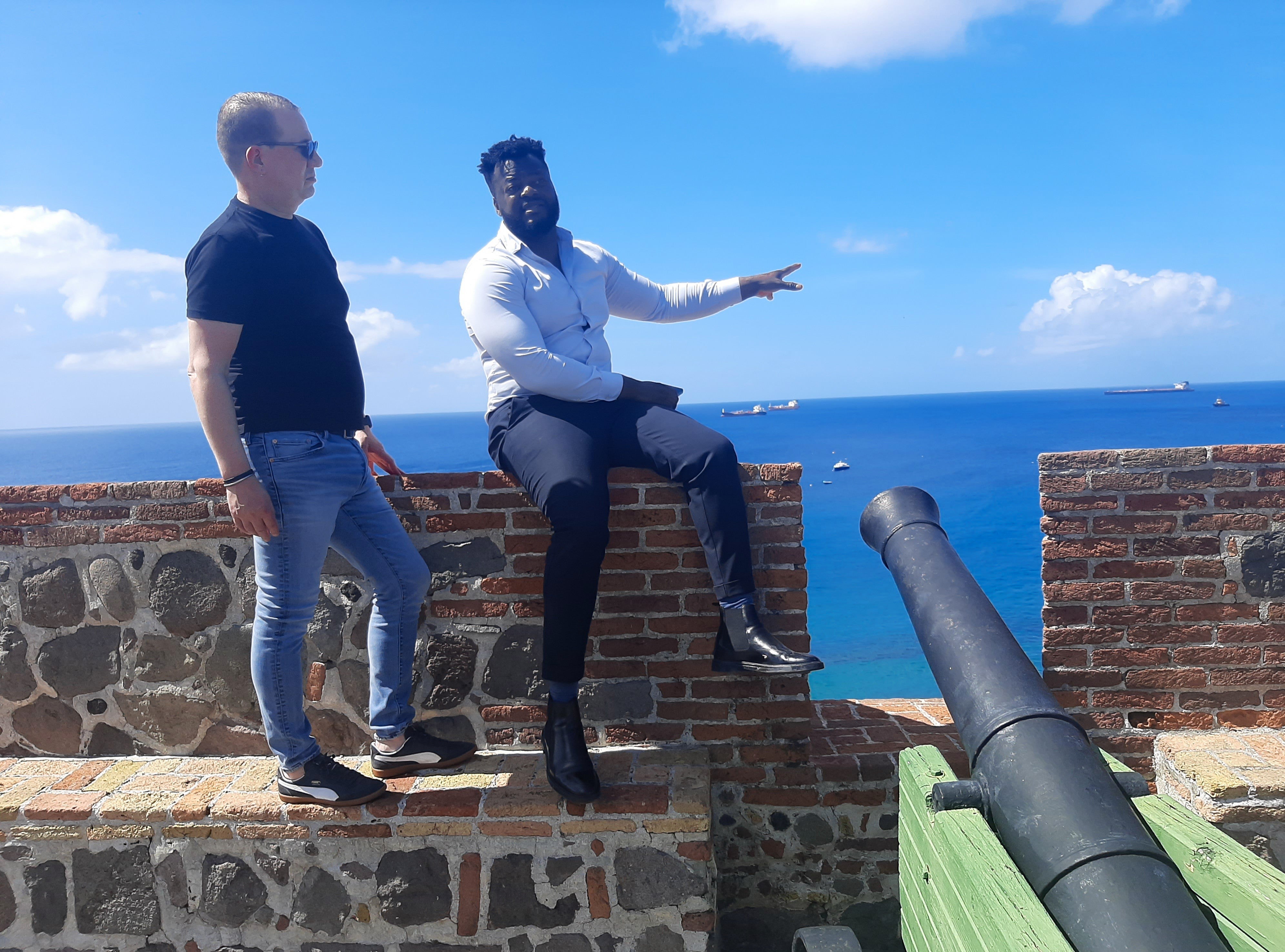
Although small, Sint Eustatius played an outsized role in the American Revolution.
It was a major shipping hub for trans-Atlantic trade. Due to oceanic conditions, the fastest route by sailing ship from Europe to the Americas was through the Caribbean. Any material assistance the American Revolution received from European allies, covert or otherwise, went through there.
“Sint Eustatius is special for tons of gunpowder and munitions flowing from places like France, and eventually the Dutch, to outfit American soldiers fighting the British,” Perelman said. “The events that took place on the Eastern Seaboard could never have happened had it not been for the Caribbean and its strategic importance to victory in North America.”
There are two other reasons Perelman is interested in Sint Eustatius: It had a large Jewish population, and it was the first foreign entity to recognize American independence.
About 40% of the island’s free population of roughly 1,000 people was Jewish, mostly of Spanish and Portuguese descent. The island was also home to about 1,500 enslaved people, according to Perelman.
British forces were well aware of Sint Eustatius’ strategic position, and then they went on the attack. British Admiral George Rodney captured and occupied the island in 1781. His first order of business was to immediately imprison all of its Jewish men — about 101 people.
It was accepted at the time for British naval officers to keep any spoils of war for themselves. When Rodney saw the wealth of an island at the center of international trade, he was not going to pass up a payday. He targeted Jewish people.
“Whatever material wealth was on their bodies, he stripped them of it,” Perelman said. “He also corralled Jewish men and women and looted their homes. He even digs up graves in search of wealth.”
Rodney’s antisemitic greed was likely his undoing. He spent months systematically harvesting wealth from Eustatius, which drew his attention away from the military objective of blocking trade routes to America.
“Rodney makes a fateful error. He misses the French fleet coming through the Caribbean,” Perelman said. “This is the fleet that lands at Chesapeake Bay and provides support to George Washington in the Battle of Yorktown.”
The exhibition “The First Salute” gets its name from a key event that happened in 1776. One of the first U.S. Navy ships, the Andrew Doria, sailed to Sint Eustatius in November of that year. The Declaration of Independence had been signed by that time, but had never officially been tested on the international stage.
The Andrew Doria arrived at Sint Eustatius as the first U.S. warship to enter a foreign port. The governor at the time, Johannes de Graaf, chose to recognize the sovereignty of the new United States by firing an 11-gun salute. It was the first time the new nation was officially greeted by another.
“The island has this magnificent appreciation for their history. The first salute looms large in their own identity,” Perelman said. “One of the reasons I’m here in November is November 16th, Stasia Day, the day of the first salute. It has become a day of cultural celebration of the islands’ past and present.”
When “The First Salute” opens at the Weitzman in April, it will feature military objects from the island, 18th-century material culture from the island’s Jewish community, and other objects and manuscripts from archives in Philadelphia and Europe.

Get daily updates from WHYY News!
WHYY is your source for fact-based, in-depth journalism and information. As a nonprofit organization, we rely on financial support from readers like you. Please give today.
